Ogdoad Of Hermopolis – Ancient Egyptian Concept Of Eternal And Primeval Forces
A. Sutherland - AncientPages.com - In Egyptian mythology, references to the Ogdoad appear in texts as early as the 25th Dynasty, known as the Nubian Dynasty or the Kushite Empire.
 Depiction of the Ogdoad with serpent and frog heads - Roman-era relief at the Hathor temple in Dendera. Image via wikipedia
Depiction of the Ogdoad with serpent and frog heads - Roman-era relief at the Hathor temple in Dendera. Image via wikipedia
Mentioned in the Coffin Texts of the Middle Kingdom (1975 BC to 1640 BC), the Ogdoad (in Greek - "the eightfold") was a very ancient Egyptian cosmological concept that embodied the four components of pre-creation (infinite time, darkness, the primeval waters, and the void).
The pantheon of the Ogdoad included eight deities (four pairs) worshiped in Hermopolis during the Old Kingdom period (27th to 22nd centuries).
The Ogdoad deities had their main cult center in Khmunu (‘Eight Town’ or ‘City of the Eight’), later known under its Hellenistic name, Hermopolis Magna. The center had also its Coptic name ‘shmun’ (means ‘eight’ in Middle Egypt) with which the god Thoth was also associated.
Thus, Nun and Naunet were primordial water in male and female form, while Huh (Heh) and Hauhet symbolized infinite space. On the other hand, Kek (Kuk) and Kauket had darkness as their domain, while Amun and Amaunet were identified with invisibility.
According to many versions of the Egyptian creation myths, the Ogdoad’s eight beings formed the first hill or the lotus flower or the cosmic egg from which the creator sun god emerged.
 From left to right) the goddess Hathor and six of the eight deities of the Ogdoad of Khmoun-Hermopolis Megale: Kek and Kauket, Naune and Nun.
From left to right) the goddess Hathor and six of the eight deities of the Ogdoad of Khmoun-Hermopolis Megale: Kek and Kauket, Naune and Nun.
Thus, the beings were treated as “the fathers and mothers” of the creator, but not the same creator. Alternatively, creator gods such as Amun, Ptah, or Thoth, who were viewed as calling the eight into being. The creator was then “his” own ancestor, the “father of the fathers and mothers.”
The Hermopolitan concept of the Ogdoad pantheon was widely acknowledged throughout Egypt, and Medinet Habu, located in western Thebes was regarded as the mortuary cult-place of the “deceased” Ogdoad’s eight primordial deities. Then, the Graeco-Roman Period, started with the conquest of Egypt by Alexander the Great in 332 BC and the kings of Egypt traditionally came to Medinet Habu every ten years to honor the Ogdoad.
As we mentioned earlier, the Egyptian creation myth developed in late and Ptolemaic times was based heavily on that of Hermopolis, with references to the Ogdoad appearing in texts as early as the 25th Dynasty.
“The most important change in the Theban versions was the elevation of Amun-Ra, the supreme god of Thebes, as primordial creator identified with Nun, “the great one who came into being at the beginning,” he is said to be the progenitor of these eight male and female deities, “who built the builders and fashioned the fashioners,” and thus also the father of Ra, the sun god..." (Brett McClain, Cosmogony (Late Ptolemaic and Roman Periods).
Updated on March 4, 2024
Written by - A. Sutherland - AncientPages.com Senior Staff Writer
Copyright © AncientPages.com All rights reserved. This material may not be published, broadcast, rewritten or redistributed in whole or part without the express written permission of AncientPages.com
Expand for referencesReferences:
Hart, George (2005), Routledge Dictionary Of Egyptian Gods And Goddesses
McClain B, Cosmogony (Late Ptolemaic and Roman Periods),
Pinch G. Handbook of Egyptian Mythology
More From Ancient Pages
-
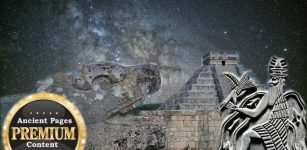 Deception And Hidden Truth – Ancient Struggle Of The Eagle And Serpent – Part 1
Ancient Mysteries | Sep 4, 2019
Deception And Hidden Truth – Ancient Struggle Of The Eagle And Serpent – Part 1
Ancient Mysteries | Sep 4, 2019 -
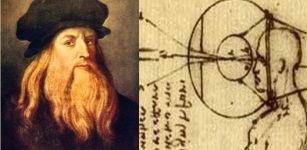 Did Leonardo Da Vinci Invent Contact Lenses In 1508?
Ancient Technology | Dec 10, 2015
Did Leonardo Da Vinci Invent Contact Lenses In 1508?
Ancient Technology | Dec 10, 2015 -
 Astonishing Pre-Inca Salt Ponds of Maras In Peru Were Created By The Chanapata Culture
Civilizations | Sep 14, 2016
Astonishing Pre-Inca Salt Ponds of Maras In Peru Were Created By The Chanapata Culture
Civilizations | Sep 14, 2016 -
 Unsolved Mystery Of Gedi Ruins Protected By The ‘Old Ones’ – Why Did People Leave?
Civilizations | Apr 2, 2019
Unsolved Mystery Of Gedi Ruins Protected By The ‘Old Ones’ – Why Did People Leave?
Civilizations | Apr 2, 2019 -
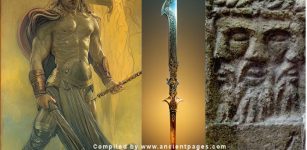 Lugh – Mighty God Of Light, Sun And Crafts In Celtic Beliefs
Celtic Mythology | Apr 30, 2018
Lugh – Mighty God Of Light, Sun And Crafts In Celtic Beliefs
Celtic Mythology | Apr 30, 2018 -
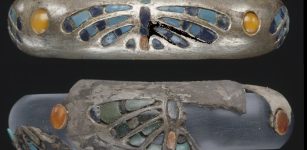 Mystery Of Egyptian Queen Hetepheres I’s Bracelets Solved!
Archaeology | Jun 2, 2023
Mystery Of Egyptian Queen Hetepheres I’s Bracelets Solved!
Archaeology | Jun 2, 2023 -
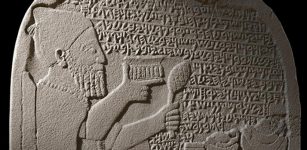 Ancient Kuttamuwa Stele And Iron Age Belief That Soul Lived In Funerary Slab
Featured Stories | Sep 10, 2016
Ancient Kuttamuwa Stele And Iron Age Belief That Soul Lived In Funerary Slab
Featured Stories | Sep 10, 2016 -
 Rare Unexpected Discovery Of Elizabethan-Era Ship At Quarry 300 Meters From The Coast
Archaeology | Jan 2, 2023
Rare Unexpected Discovery Of Elizabethan-Era Ship At Quarry 300 Meters From The Coast
Archaeology | Jan 2, 2023 -
 Unraveling The Mystery Of A Lost Biblical Underground World – Is A Precious Ancient Artifact The Answer?
Ancient Mysteries | May 30, 2018
Unraveling The Mystery Of A Lost Biblical Underground World – Is A Precious Ancient Artifact The Answer?
Ancient Mysteries | May 30, 2018 -
 Is This The Face of Queen Elizabeth I?
Archaeology | Oct 15, 2018
Is This The Face of Queen Elizabeth I?
Archaeology | Oct 15, 2018 -
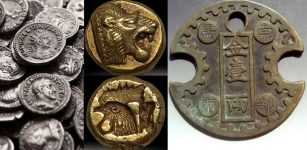 Ancient Round Coins Were Invented To Prevent Fraud
Ancient History Facts | Mar 21, 2018
Ancient Round Coins Were Invented To Prevent Fraud
Ancient History Facts | Mar 21, 2018 -
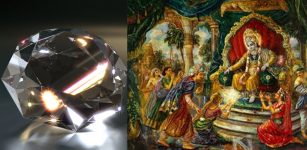 Syamantaka – Divine Jewel With Magical Powers Was A Gift From The Sun God In Hindu Mythology
Featured Stories | Mar 1, 2019
Syamantaka – Divine Jewel With Magical Powers Was A Gift From The Sun God In Hindu Mythology
Featured Stories | Mar 1, 2019 -
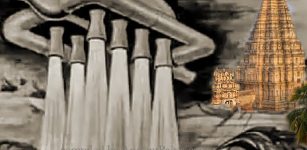 Vimanas Of The Rama Empire: Flying Machines Dominated Ancient Skies In Distant Past
Ancient Technology | Jul 23, 2017
Vimanas Of The Rama Empire: Flying Machines Dominated Ancient Skies In Distant Past
Ancient Technology | Jul 23, 2017 -
 Denisovan DNA May Explain Why Tibetan Women Thrive In Low Oxygen At High Altitudes For Over 10,000 Years
DNA | Nov 18, 2024
Denisovan DNA May Explain Why Tibetan Women Thrive In Low Oxygen At High Altitudes For Over 10,000 Years
DNA | Nov 18, 2024 -
 How Did An Ancient Egyptian Sarcophagus End Up Abandoned On A Street In London?
Artifacts | Mar 22, 2023
How Did An Ancient Egyptian Sarcophagus End Up Abandoned On A Street In London?
Artifacts | Mar 22, 2023 -
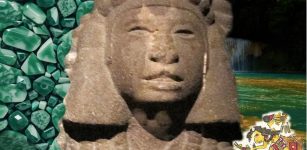 Chalchihuitlicue: Beautiful, Dangerous, Changeable And Unpredictable Water Goddess In Aztec Mythology
Featured Stories | Mar 20, 2024
Chalchihuitlicue: Beautiful, Dangerous, Changeable And Unpredictable Water Goddess In Aztec Mythology
Featured Stories | Mar 20, 2024 -
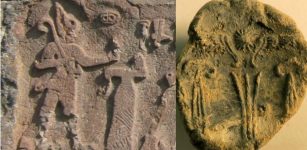 Ancient Clay Seals That Could Re-Write Hittite History Discovered In Kayalıpınar, Turkey
Archaeology | Sep 14, 2023
Ancient Clay Seals That Could Re-Write Hittite History Discovered In Kayalıpınar, Turkey
Archaeology | Sep 14, 2023 -
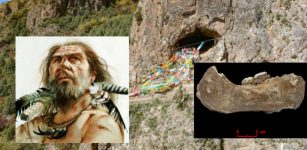 Denisovans Were First To Adapt To High Altitude And Harsh Conditions Of Tibetan Plateau
Archaeology | May 2, 2019
Denisovans Were First To Adapt To High Altitude And Harsh Conditions Of Tibetan Plateau
Archaeology | May 2, 2019 -
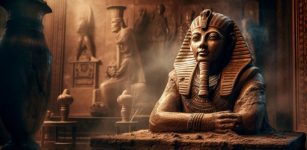 What Did A Day In Pharaoh’ s Life Look Like?
Ancient History Facts | Dec 9, 2019
What Did A Day In Pharaoh’ s Life Look Like?
Ancient History Facts | Dec 9, 2019 -
 Unsolved Ancient Mystery Of Hand Of Prêles – Unique Discovery Of Ancient Bronze Hand Puzzles Scientists
Archaeology | Sep 28, 2018
Unsolved Ancient Mystery Of Hand Of Prêles – Unique Discovery Of Ancient Bronze Hand Puzzles Scientists
Archaeology | Sep 28, 2018
